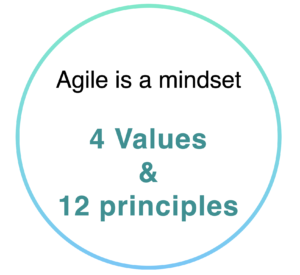Introduction
Agile software development is a method of software development that emphasizes flexibility, collaboration, and customer satisfaction. It is based on the Agile Manifesto, a set of principles for software development that prioritize individuals and interactions, working software, and customer collaboration over processes and tools. Agile development can be applied to a wide range of software development projects, it is particularly well-suited for projects that are complex, rapidly changing, or have high levels of uncertainty.
Principles of Agile Development
One of the key principles of Agile development is the use of iterations, or “sprints,” to deliver working software. These sprints typically last two to four weeks and involve a cross-functional team working together to deliver a usable product. At the end of each sprint, the team conducts a review and a retrospective to identify areas for improvement and plan for the next sprint. Another important aspect of Agile development is the use of continuous feedback and adaptation, the team regularly solicits feedback from customers and stakeholders and uses that feedback to make adjustments to the product. This allows for a more responsive and customer-focused development process.

Agile Methodologies
Agile development is often used in conjunction with other methodologies, such as Scrum or Kanban, to provide a framework for managing the development process. Scrum is an Agile framework for managing product development. It emphasizes teamwork, accountability, and iterative progress. Kanban, on the other hand, is a method for managing and improving workflows. It emphasizes visualizing work, limiting work in progress, and managing flow. Both methodologies can be used in conjunction with Agile development principles to provide a more structured approach to managing the development process.
Tools and Practices
Agile development also emphasizes the use of lightweight, flexible tools and practices. This includes the use of tools such as user stories and acceptance criteria to define requirements, and the use of practices such as pair programming and test-driven development to improve the quality of the code. Pair programming is a technique in which two programmers work together at one computer. One person writes the code while the other reviews and advises. Test-driven development, is a method of software development in which tests are written before any code is written. This helps ensure that the code meets the requirements and is of high quality.
Advantages and Limitations
Agile development has several advantages over traditional, waterfall-based development methods. One of the main advantages is that it allows for a more flexible and responsive development process. This is because the team is able to make adjustments to the product based on customer feedback and changing requirements. Additionally, Agile development promotes collaboration and teamwork, which can lead to better communication and a more cohesive development process. However, Agile development also has some limitations. One of the main limitations is that it can be difficult to plan and budget for long-term projects. Additionally, Agile development requires a high level of commitment and discipline from the development team.
Conclusion
Agile software development is a method of software development that emphasizes flexibility, collaboration, and customer satisfaction. It is based on the Agile Manifesto, a set of principles for software development that prioritize individuals and interactions, working software, and customer collaboration over processes and tools. Agile development can be applied to a wide range of software development projects, it is particularly well-suited for projects that are complex, rapidly changing, or have high levels of uncertainty. Agile development has several advantages over traditional, waterfall-based development methods, but also has some limitations.






